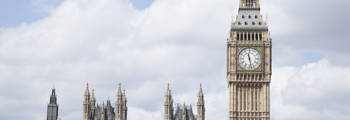14/06/2022
The key things that have been learnt since the fire, and considerations about whether enough has been done to put right the failings and ensure the safety of people in high-rise residential buildings in the future
14 June 2022 marks the 5-year anniversary since the Grenfell Tower fire, which tragically resulted in the death of 72 people in the worst residential fire since World War II.
Grenfell Tower had a “stay put” policy in place, which is a policy often followed for high rise developments as each flat should be self-contained preventing the fire from spreading from one flat to another. The fire at Grenfell Tower demonstrated that a “stay put” policy would not work when the flats weren’t actually self-contained and were constructed using materials and methods that in fact allowed fire to spread easily.
The fire also highlighted a more widespread problem – that the system in place for ensuring building and fire safety was fundamentally flawed and that the issues identified at Grenfell actually affected many other similar properties, meaning many more residents remained at risk.
In his report into phase 1 of the Grenfell Tower Inquiry, published in October 2019, Sir Martin Moore-Bick concluded that “that the external walls of the building failed to comply with Requirement B4(1) of Schedule 1 to the Building Regulations 2010, in that they did not adequately resist the spread of fire having regard to the height, use and position of the building. On the contrary, they actively promoted it”. This was principally due, he said, “to the presence of ACM panels with a polyethylene core, but other materials and other features, including the design and geometry of the facade, also played a role”. Phase 2 of the inquiry, which remains on-going, is considering the question of how Grenfell Tower came to be in a condition which allowed the fire to spread in the way it did.
Dame Judith Hackitt’s report, which was commissioned after the fire to provide an independent review of Building Regulations and Fire Safety reported that “As the review has progressed, it has become clear that the whole system of regulation, covering what is written down and the way in which it is enacted in practice, is not fit for purpose, leaving room for those who want to take shortcuts to do so”. It said that “the key issues underpinning the system failure include:
- Ignorance – regulations and guidance are not always read by those who need to, and when they do the guidance is misunderstood and misinterpreted.
- Indifference – the primary motivation is to do things as quickly and cheaply as possible rather than to deliver quality homes which are safe for people to live in. When concerns are raised, by others involved in building work or by residents, they are often ignored. Some of those undertaking building work fail to prioritise safety, using the ambiguity of regulations and guidance to game the system.
- Lack of clarity on roles and responsibilities – there is ambiguity over where responsibility lies, exacerbated by a level of fragmentation within the industry, and precluding robust ownership of accountability.
- Inadequate regulatory oversight and enforcement tools – the size or complexity of a project does not seem to inform the way in which it is overseen by the regulator. Where enforcement is necessary, it is often not pursued. Where it is pursued, the penalties are so small as to be an ineffective deterrent”.
Hackitt’s report said that “The above issues have helped to create a cultural issue across the sector, which can be described as a ‘race to the bottom’ caused either through ignorance, indifference, or because the system does not facilitate good practice. There is insufficient focus on delivering the best quality building possible, in order to ensure that residents are safe, and feel safe”.
5 years on from the tragic fire, in this article, we look into some of the key things that have been learnt since the fire and consider what enough has yet been done to put right the failings and ensure the safety of people in high-rise residential buildings in the future.
Progress:
- A ban on the use of combustible materials in and on the external walls of flats over 18m in England as well as hospitals, student accommodation and dormitories in boarding schools, was introduced in December 2018. This has now been extended to new hotels, hostels and boarding houses over 18m.
- New statutory guidance will be introduced to restrict the combustibility of materials used in and on the external walls of residential buildings between 11-18m in height.
- Since Grenfell, 486 high-rise buildings were identified as containing ACM cladding. 318 have now fully completed remediation work.
- 45 developers have signed a pledge committing to remediate, at their own cost, life critical fire safety works in buildings over 11 metres that they have played a role in developing or refurbishing over the last 30 years in England.
- The London Fire Brigade has accepted every recommendation made to it by the Grenfell Tower Inquiry and has fundamentally changed the way it tackles large-scale fires in high-rise buildings
- Fire Service Authorities have said they will take more action against building owners after clarification by the Fire Safety Act 2021 that existing law (The Regulatory Reform (Fire Safety) Order 2005) makes the responsible person (which could be the freeholder, management company or managing agent) responsible for the building’s structure (including flat entrance doors) and external walls (including windows, balconies, cladding, insulation and fixings) in addition to any common parts.
- The Building Safety Act 2022 has now become law, this allows for a number of key changes (albeit most of these are yet to come into force) including, for high-rise buildings specifically:
- The establishment of a dedicated Building Safety Regulator to act as the sole Building Control body and to ensure advisory and competence committees are established
- A 3-stage gateway process which requires approval at the planning, pre-construction and completion stages.
- An Accountable Person to be appointed to have legal responsibility for ensuring that fire and structural risks are understood, and that appropriate steps and actions to mitigate and manage these risks are taken.
- A Golden Thread of building Information to be created, stored and updated throughout the building’s lifecycle.
- Residents to be given a voice and a channel to ensure their complaints and concerns are heard and not dismissed.
- The Fire Safety (England) Regulations 2022 (announced 18 May 2022, intended to come into force on 23 January 2023) provide that all new residential blocks over 18m must in future have evacuation alert system to inform residents of a change in evacuation strategy during a fire and all new residential buildings above 11m will have to have a secure information box to provide important details about a building and help fire and rescue services which in the event of a fire. Electronic floor plans and information about the design and materials of external walls for all high-risk buildings must also be provided to the fire service and signage (visible in low light or smoky conditions) must be installed to identify floor and flat numbers.
However:
- More than 100 buildings with Grenfell-style cladding are still yet to complete remediation work (31 are yet to see work begin, the other 53 have had their cladding removed but are awaiting building control sign off).
- The Department for Levelling Up, Housing and Communities (DLUHC) has found that nearly 140,000 leaseholders are still believed to be living in mid-rise buildings with “life-safety fire risks” and that between 6,220 and 8,890 out of a possible 71,000 to 79,000 mid-rise residential buildings in England require work to fix their issues.
- The “stay put” policy continues to be used in situations when it is not appropriate. On 27 April 2022, a fire broke out at a five-storey block in Deptford despite the fact that the property was timber framed and the fire spread within the wall cavities. The Government has confirmed it will not implement the recommendation from the Grenfell Tower Inquiry that all building owners should be required by law to develop a ‘plan B’ in case it becomes necessary to implement an evacuation and will continue with ‘stay put’ advice in most buildings as the recommendation was not “proportionate”. A consultation has however been launched, for buildings known to have serious fire safety issues only, around sharing the location of disabled residents with fire services.
- Much of the Building Safety Act 2020 relies on further regulations to bring it into force and to set out the detail of how it will work – some of these are in draft but are yet to be finalised. The Building Safety Act suggests that it will come into force in stages, most within the next 18 months.
- The Grenfell Tower Inquiry has heard from many witnesses and reviewed a large amount of documentary evidence, but Phase 2 of the inquiry (the principal focus of which is on the decisions which led to the installation of a highly combustible cladding system on a high-rise residential building and the wider background against which they were taken) is yet to be completed and the phase 2 report is unlikely to be published until at least late 2022. This means questions are yet to be answered and further recommendations are expected.
- The police investigation into the fire continues. It is to be awaited as to whether anyone involved in the construction or operation of the tower will face criminal prosecution.
It is clear that lots has been achieved already but that there is still more to do. The enacting of provisions within the Building Safety Act should help move us forward. It remains to be seen what other recommendations Phase 2 of the Grenfell Tower Inquiry makes.
If you would like to discuss this topic in more detail, please contact Louise Mansfield, Legal Director, or Louise Robling, Partner.




